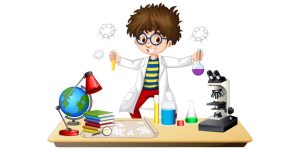A Simple and Comprehensive Guide to Living Things & Non-Living Things
All things on this planet as a broader category can be divided into sub-categories based on different criteria. However, the broadest division can be made into two – living and non-living things. Everything we see around us can be categorised into these two divisions. The criteria of this division are the presence of life within the things.
All the things that are born, breathe, grow, reproduce, and perish eventually, have life and fall under the category of living things. All the other things that do not undergo this flow of being are non-living. Some very common examples of non-living things are rocks, water, air, etc. Some living things examples are humans, animals, trees, etc.
Let us throw some light on living and non-living things definition and characteristics in this blog.
Living and non-living things – Definition:
As a definition of living thing, these refer to things that have or ever had life. Things that are created of microscopic structures are termed cells. These cells obtain energy through different sources and use it to exist. Living things have a lifespan that starts with being born, growing, and finally perishing.
A non-living thing refers to something that was never alive. It is not made of cells and does not have a specific life span. It is neither born nor grows nor perishes.
Living and non-living things – Characteristics:
Living Thing:
Several specific characteristics of a living thing make it living and result from being alive. Let us look at some:
- Cell creates the structural base of a living thing.
- They breathe or respire. Any and every living thing inhale and exhale to exist.
- They obtain energy and use it in order to survive.
- They have the ability to reproduce. Thus, they start the cycle of life and procreation.
- They have locomotive abilities that is they can move in some form. For example, Humans and animals can travel from one place to another through walking, swimming, climbing, etc.
- They have a metabolism that can acquire energy from consuming food in some form.
- They react to stimuli, both internal and external. For example, reflex is an example of a stimulus where we react to unpleasant or unexpected situations without thinking.
- They also have the ability to adapt to the environment and changes in it.
Some of the living things examples are animals, plants, birds, fishes, human beings, etc.
Non-living Thing:
Non-living things have several unique characteristics. Let us look at some:
- They do not exhibit any characteristics that are attributed to life, such as respire, grow, reproduce, adapt, etc.
- They are not of a certain size.
- They do not have a specific lifespan.
- They cannot metabolise.
- They do not have locomotive abilities.
Examples of non-living things are stones, paper, soil, water, etc.
Difference between living and non-living things:
Being divided into two categories, living and non-living things are majorly the opposite of each other. Let us look at some differences:
|
Living Things |
Non-living things |
|
Are or were alive at some point of time |
Are not alive and never were |
|
Acquire energy from sources such as food, water, air, etc. |
Do not need energy to exist or survive |
|
Have a life span and are able to reproduce |
Do not have a specific lifespan and cannot procreate |
|
Sensitive to stimuli and respond to it |
No response to stimuli |
|
Are made of cells that grow and develop |
Are not made of cells and do not change shape and size |
|
Have locomotive abilities |
Cannot move in any way without external force |
|
Cells need to respire by inhaling gases and exhaling |
Respiration is not performed and needed |
|
Examples: Trees, humans, animals, fishes |
Examples: Stones, soils, air, water |
Special characteristics unique to living things:
As living things have life and several unique characteristics attributed to them, here are some special mentions:
- Living things need nutrition to grow and survive. So, they intake food, and through the process of consumption and digestion, the nutrients are absorbed from the food and used for their survival. The same process of acquiring nutrition is also done through solar energy for autotropic living things. Autotrophs absorb and utilise solar energy to make food and survive. Plants are an example of autotrophs. As nutrient is absorbed and utilised the remaining of the digested food is eliminated from the body through excretion.
- Living things have the unique ability to procreate and make offspring. So, as living things have a lifespan and eventually die, reproducing ensures the continuity of the species. There are several different ways in which a living thing procreates such as through childbirth, eggs., fission, regeneration, budding, etc.
So, now we know how living and non-living things broadly categorise all things around us. Non-living things are essential for the survival of living things. Living things have life and show unique characteristics such as growing, breathing, procreating, moving, etc. Living and non-living things again can be further categorised based on different criteria. The world is inhabited by different living and non-living things, and each contributes to the planet’s existence in some form or another. As living things depend on the growth and development of cells to survive, they are dependent on each other as well as the non-living things. Such as air and water are necessary for the survival of any living being. Soil is needed for producing the food they eat, the land they live in, vessels they make. So, the world strikes the perfect balance of both living and non-living things.







